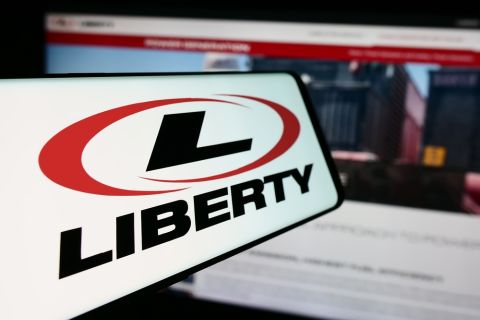
Source: Shutterstock
RIO DE JANEIRO—LNG players of the Western Hemisphere discussed market information on U.S. LNG exports along with trends and opportunities for the natural gas sector in South America during a recent forum.
Fundação Getulio Vargas Energia, a Brazilian think tank organization, held the first U.S.-Americas LNG Forum on May 24.
LNG supply is surpassing demand and its price is dropping in the short term, according to a study by IHS Markit Consulting. But the LNG sector’s future appears promising mainly because of growing demand in China and other Asian countries, and LNG prices will be more balanced in 2022 and onward, according to IHS.
The United States has been expanding its LNG export capacity, having grown from less than 2 million tonnes per annum (mtpa) in 2015 to 18 mtpa in 2017. The number is expected to top 77 mtpa by 2022, which would elevate the U.S. to become the world’s No. 2 exporter behind Australia. The U.S. is currently the fourth-largest LNG producer, trailing Qatar, Australia and Malaysia.
“The United States, for the first time since the 1950s, is on the verge of becoming a net exporter of energy,” Thomas R. Hardy, director of congressional and public relations for the U.S. Trade and Development Agency (USTDA), said during the event. “This dramatic change comes at the same time that current energy capacity is stretched thin across the Americas.”
Currently, the Americas consume roughly 32% of all U.S. LNG exports but LNG demand could increase in some countries in the region over the next few years. The Southern Cone—a geographic region composed of the southernmost areas of South America covering Brazil, Argentina, Chile and Uruguay—is creating a growing demand for natural gas, according to IHS CERA Latin America Director Roberto Ferreira da Cunha.
“It is expected to reach 30 million cubic meters a day over the next 10 years, led by the increase of electric generation and industrial demand,” Da Cunha said. “Brazil, the most important market in the region, is expected to increase an average of 4% a year over the next 10 years.”
He added that Southern Cone gas trade flows would change in the 2020s, led by declining fields in Bolivia and higher supplies in Argentina and Brazil.
Yet, the region will face challenges before it can take full advantage of its natural gas resources. In Brazil, logistics challenges of supplying natural gas in the new pre-salt areas in the country will require huge investments and it may take some time to meet growing domestic demand. Argentina’s natural gas output is declining and it is counting on the Vaca Muerta giant gas field to boost its production. However, it will take some time for Vaca Muerta to achieve attractive levels of productivity.
Both countries—Brazil and Argentina—are deeply dependent on natural from Bolivia, a country that is having difficulty attracting investments to increase its natural gas reserves.
Brazil-US Partnership
According to the U.S. Department of Energy, Brazil is the third-largest importer of U.S. LNG in Latin America, having imported roughly 28 billion cubic feet (Bcf) in the last 12 months. Hardy said the agency is also working to open opportunities for American companies throughout the gas value chain in Brazil.
The partnership comes as Brazil faces challenges involving its alternative energy sources. Hydropower isn’t as reliable as it once was because of longer and more frequent droughts, and diesel generation is increasingly less affordable. The two countries establishing a partnership in the LNG sector provide a good opportunity, according to Hardy.
“This is all exciting news,” Hardy said. “From engineering firms to technology and equipment providers, American companies are the global leaders in providing quality infrastructure and I am confident that these solutions can be deployed here in Brazil for the benefit of the Brazilian people and the economy.”
The forum highlighted opportunities available for U.S. and Brazilian companies and government agencies to harness the world’s changing energy mix. By creating an environment that advances the utilization of gas, countries can expand and diversify energy production source. Hardy said the USTDA recently hosted a technical visit for delegates from ANP, Brazil’s oil regulator. The visit highlighted the U.S. regulatory experience in natural gas storage, operational security of pipelines and terminals, and LNG storage.
“LNG is transforming the energy markets globally and that impact can be achieved here in Brazil,” Hardy said. “Increased LNG opens opportunities for helping countries transform transportation, manufacturing and petrochemicals markets. With increased gas availability, companies have an opportunity to deploy innovative solutions for the distribution of LNG across the country expanding the impact of the gas revolution to impact all areas of Brazil.”
Recommended Reading
2024 E&P Meritorious Engineering Awards for Innovation
2024-11-12 - Hart Energy’s MEA program highlights new products and technologies demonstrating innovations in concept, design and application.
Fugro’s Remote Capabilities Usher In New Age of Efficiency, Safety
2024-11-19 - Fugro’s remote operations center allows operators to accomplish the same tasks they’ve done on vessels while being on land.
Liberty Capitalizes on Frac Tech Expertise to Navigate Soft Market
2024-10-18 - Liberty Energy capitalized on its “competitive edge” when navigating a challenging demand environment in third-quarter 2024, CEO Chris Wright said in the company’s quarterly earnings call.
Companies Hop on Digital Twins, AI Trends to Transform Day-to-day Processes
2024-10-23 - A big trend for oil and gas companies is applying AI and digital twin technology into everyday processes, said Kongsberg Digital's Yorinde Lokin-Knegtering at Gastech 2024.
No Good Vibrations: Neo Oiltools’ Solution to Vibrational Drilling Problems
2024-09-10 - Vibrations cause plenty of costly issues when drilling downhole, but Neo Oiltool’s NeoTork combats these issues, enhancing efficiency and reducing costs.
Comments
Add new comment
This conversation is moderated according to Hart Energy community rules. Please read the rules before joining the discussion. If you’re experiencing any technical problems, please contact our customer care team.






